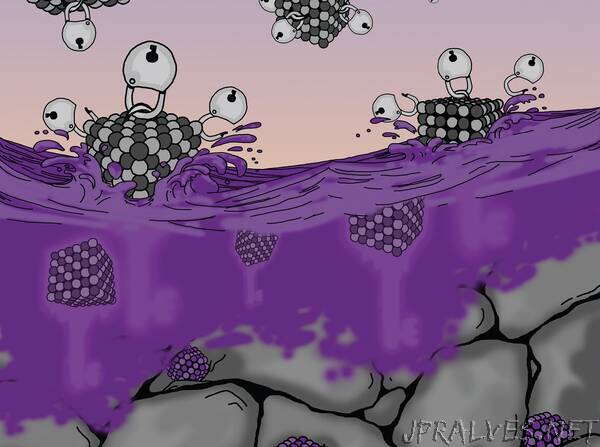
“Investigators from the ICN2 Advanced Electron Nanoscopy Group have collaborated in an international research to show that inorganic ligands can be used to improve the performance as a thermoelectric material of SnTe-CdSe nanocomposites. The efficiency obtained with this procedure is the highest reported for this material and was highlighted in the front cover of JACS.
Everybody knows that electrical devices get hot. However, the other way around is also possible: the search for thermoelectric materials, able to efficiently convert heat into electricity, has been a longstanding challenge. A material’s thermoelectric performance is usually evaluated through a coefficient called figure of merit (ZT). The best thermoelectric materials known so far have reached a ZT just above 1.
The bottom-up assembly and consolidation of nanocrystals (NCs) into bulk nanocomposites has proven to be a suitable procedure to get high-ZT materials. These NCs are delivered with organic molecules (ligands) coordinated at their surfaces. These molecules are insulating and thus need to be removed before the consolidation of the NCs. Sometimes they are just exchanged with inorganic ligands to produce fully inorganic nanomaterials.
In a recent communication that made it to the front cover of JACS, researchers from several institutions demonstrate that these inorganic ligands can also be used to modify the structure of the electronic band of the final nanocomposite, as well as simultaneously enable the formation of secondary phases during NCs consolidation.
The work was led by the IST (Austria) and ETH (Switzerland), together with IREC (Spain) and EMPA (Switzerland). The ICN2 was involved in the research through ICREA Prof. Jordi Arbiol, Group Leader of the Advanced Electron Nanoscopy Group, and visiting professor Dr Aziz Genç. They studied the nanocomposites at atomic scale by means of transmission electron microscopy and related spectroscopies. Inorganic CdSe-based surface ligands were used with a double effect: these units partially alloyed with the SnTe matrix to modify its band structure and partially crystallized in CdSe nanodomains, becoming a secondary phase within the matrix. Both effects served to increase the ZT of these SnTe-CdSe nanocomposites up to 1.3 at 850 K, which is the highest thermoelectric figure of merit reported for SnTe with this procedure.”
